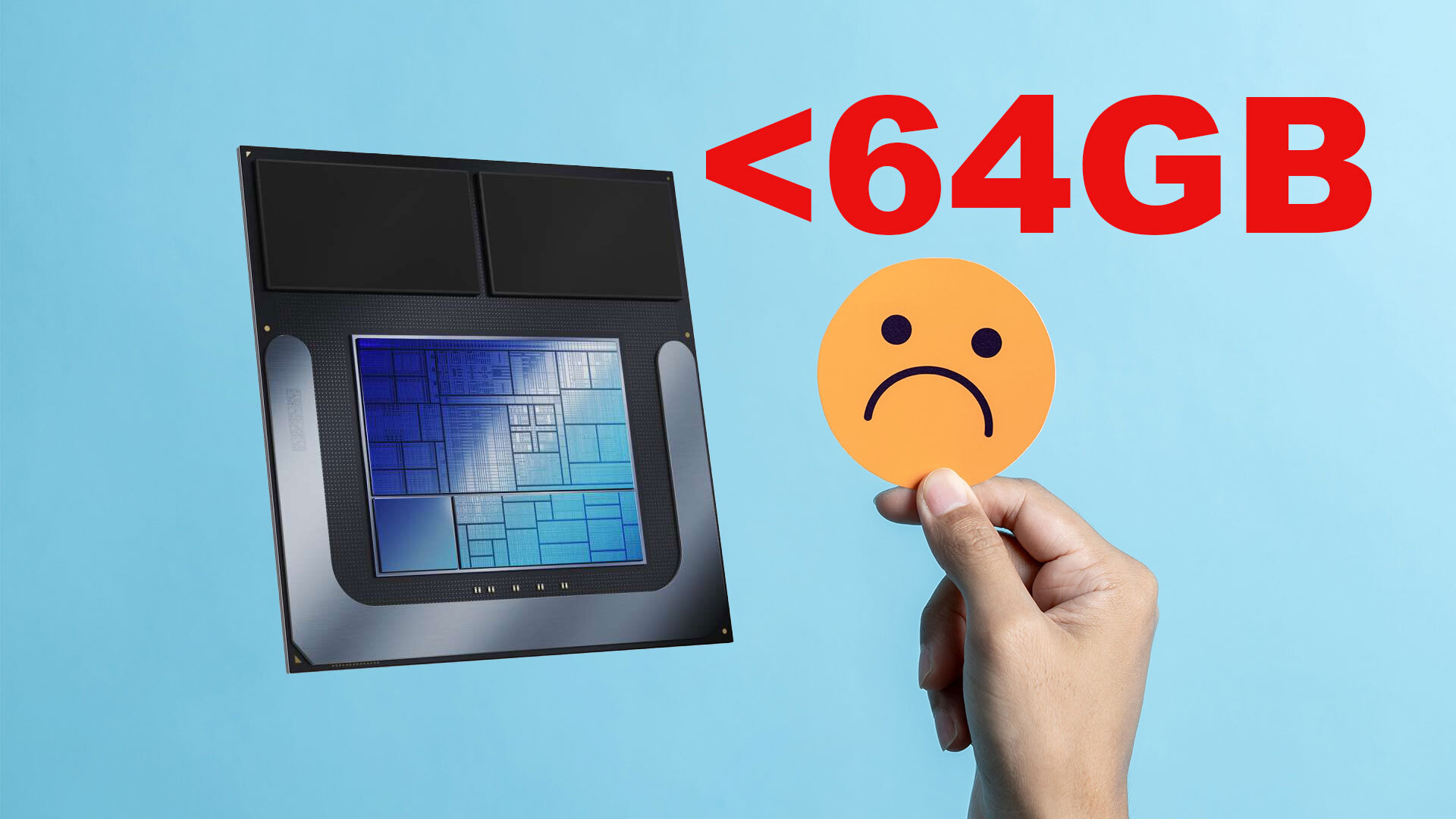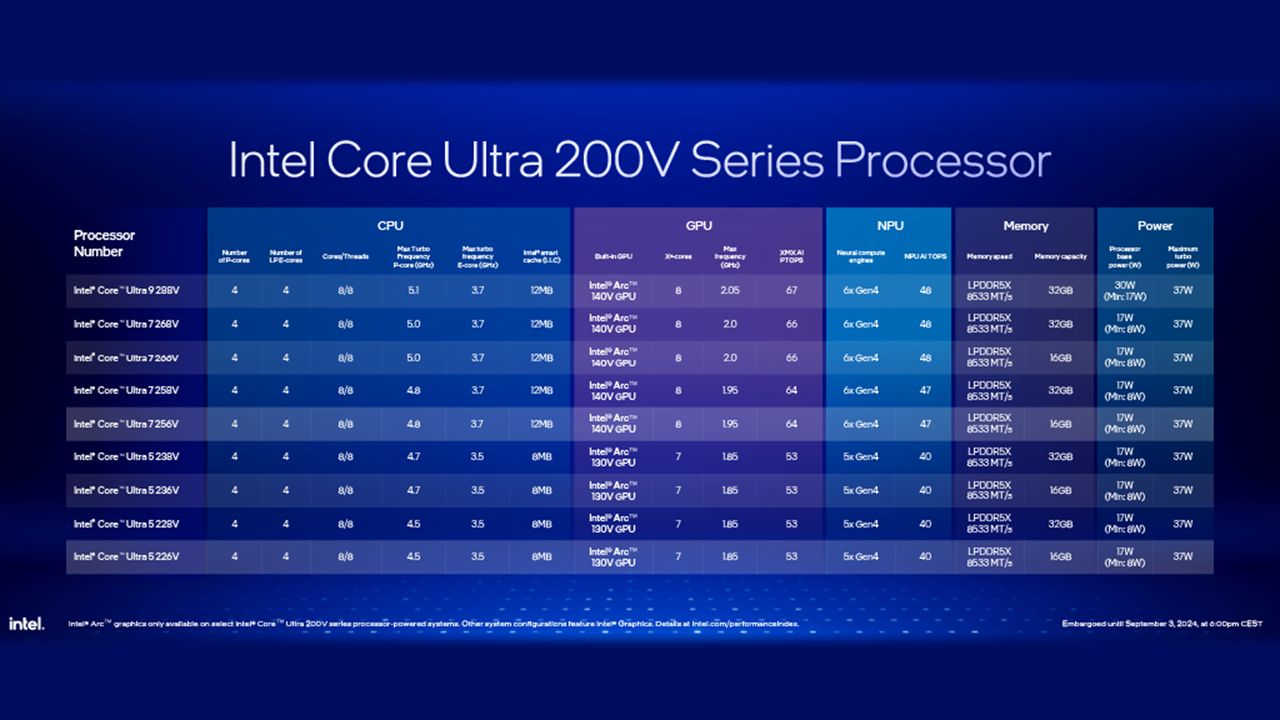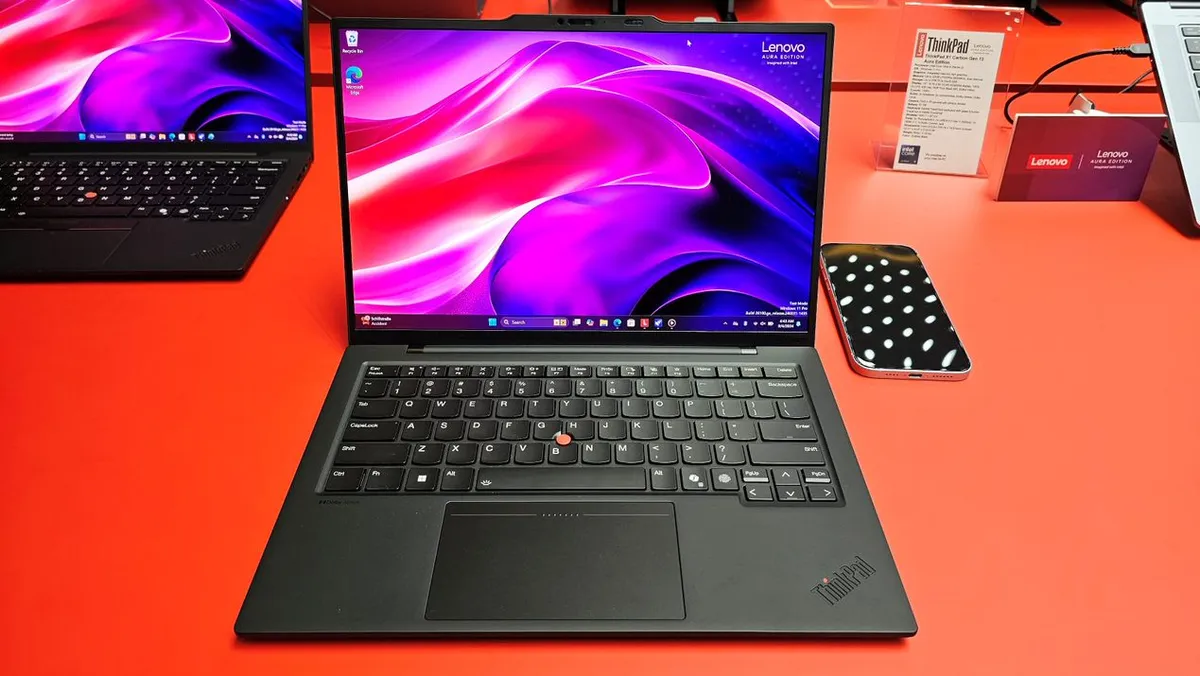
I’m in the market for a new laptop this fall, but because of a deal-breaking limitation in Intel’s new chip design, I will not be considering a Lunar Lake system. Formally unveiled this week at IFA Berlin, Intel’s new Core Ultra (Series 2) “Lunar Lake” laptop CPUs promise significant improvements over the prior-generation “Meteor Lake” chips, including much better AI performance, vastly superior battery life, and strong integrated graphics. Premium laptops powered by Lunar Lake, which goes under the brand name Intel Core Ultra 200V series, will be everywhere this fall.
I need my next laptop to have 64GB of RAM. However, for the first time in modern PC history (Apple has done it on Macs), Intel has decided to build the DRAM onto the same package with the CPU, which means that neither the laptop manufacturer nor laptop owners will be able to add more either before or after sale. Intel is only selling Lunar Lake CPUs with either 16 or 32GB of memory onboard, so anyone who wants more memory than that is out of luck.

That rules out any system with Lunar Lake at its heart. My current daily driver laptop is a ThinkPad X1 Carbon (6th Gen) with 16GB of RAM that I bought in 2018. I still love it for its lightweight chassis, good battery life, fantastic keyboard, and convenient TrackPoint pointing stick.
But after six years of faithful service, my laptop is now a bit too slow for my workloads, particularly because 16GB of RAM gets filled up just from using web tools, editing code, cropping photos, and watching videos. The amount of RAM eaten by the websites that populate my 80+ browser tabs has grown over time so, in 2024, 32GB is what I would need just to keep pace. However, I also want the ability to run virtual machines so I can test out different Windows Insider builds or Linux flavors while keeping each environment in its own window. To have each VM run reasonably well, I should probably allot 16GB of RAM for it to use.
So, if I’m running one VM in a window and I have my usual load of browser tabs, photos open for editing, videos running, and code to edit, I’m going to need more than 32GB of RAM to do it comfortably. Then consider that, like most people, I probably won’t buy a new laptop again for several years. 64GB might be what I need for just my regular work in 2028, without even running a single VM. If you’re a power user like me, 64GB might be a good choice for you also.
Lenovo just announced a new ThinkPad X1 Carbon which sounds really appealing to me. The X1 Carbon (Gen 13) Aura Edition is the lightest version ever, tipping the scales at just 2.16 pounds, and yet it maintains the same 57 Whr battery as prior-gen models. Its processor is said to be much more power efficient than prior generations, promising up to 18 hours of battery life. Between its NPU and its Arc GPU, the laptop’s processor (depending on which SKU) could have up to 115 TOPS, which would be great for AI workloads, particularly as more and more AI gets built into Windows.

However, even if the X1 Carbon (Gen 13) aces all of our benchmark tests when we inevitably review it, I won’t buy one, because it has a Lunar Lake processor and therefore cannot come with any more than 32GB of RAM. The problem isn’t limited to the X1 Carbon or to Lenovo. If I wanted another ultraportable productivity laptop such as a Dell XPS 13 or an Asus ZenBook 14S, I’d have the same problem.
“16GB and 32GB configurations address most workloads for the target market of these processors,” an Intel spokesman told me when I asked about Lunar Lake’s limited memory options. “We offer other products that support higher capacities of memory.”
Among the “other products,” Intel is referring to are the company’s Core Ultra (Series 1) “Meteor Lake” laptop processors, which first launched in December 2023. These are the last-gen CPUs that Lunar Lake is replacing and yet, because they don’t have the RAM built into the package, laptop vendors such as Lenovo and Dell can use them with 64GB.
Another possibility for me and others who want 64GB laptops is to get one with a larger, more power-hungry processor than Lunar Lake inside. After all, if you’re doing as much intense work as I am, a higher-wattage CPU could make everything run more smoothly. All of the Lunar Lake processors announced this month are part of Intel’s U-series, which means that they only have 17 to 30-watt TDPs (thermal design power).
Intel will inevitably release updated H-series processors, which have 45-watt or higher TDPs and are designed for workstations and gaming laptops. Those will likely have 64GB memory optionss or will continue to have the RAM on the motherboard. But laptops with new H-series CPUs probably won’t launch until January at the earliest and, even when they do, they will be thicker and heavier than the X1 Carbon. For example, Lenovo’s ThinkPad P14s, which has a Meteor Lake H-series Intel CPU, is 3.55 pounds and 0.73 inches thick versus 2.16 pounds and 0.59 inches thick for the X1 Carbon (Gen 13).
I also could go with a current-gen laptop that has one of AMD’s new Ryzen AI 300 CPUs. For example, Lenovo is releasing a ThinkPad T14s with an AMD Ryzen AI chip inside and up to 64GB of RAM in October. It will weigh 2.86 pounds and be 0.66 inches thick when it launches in October. Some Qualcomm Snapdragon Elite X-powered laptops, including the Dell XPS 13 (9345) with Snapdragon, are also available with 64GB of RAM.
I will definitely consider switching to an AMD laptop such as the T14s to get my 64GB fix, but what I don’t want to do is go with a model that is much larger and heavier than my current, 2.5-pound, 0.59-inch thick X1 Carbon (Gen 6). Having a system that’s this light is really helpful both when I’m commuting and when I’m traveling. If I’m not carrying lunch or a second laptop (usually a review unit) with me, my backpack feels empty with just the X1 Carbon in it.
And, when I’m sitting on the couch at home, the X1 Carbon fits perfectly on my lap, without taking up a ton of space; it even fits nicely on an airplane tray table. If I’m doing more processing-intense work at home, I’ll be doing it on my powerful desktop PC, so I need my laptop to be light more than I need it to be powerful. And I really, really want the TrackPoint. That’s why I really want another X1 Carbon.
Right now, if you shop at Lenovo.com, you can custom configure a ThinkPad X1 Carbon (Gen 12), the older model that Gen 13 is replacing, with 64GB. You can do the same with an XPS 13 on Dell.com. The catch is that you have to live with last year’s processors, which deliver a lot less performance (only 11 TOPS on the NPU) and power efficiency than Lunar Lake.


A spokesman for Dell told me that the company believes that most users who want 64GB of RAM should consider larger and more power hungry laptops such as the Dell XPS 16, which uses H-series processors. Those who still want a thin-and-light laptop can either buy the Dell XPS with a Qualcomm Snapdragon processor, which is available with 64GB of RAM, or a last-gen Intel Meteor Lake laptop.
Intel won’t comment on future products, but we know that Panther Lake will succeed Lunar Lake sometime in 2025. It seems likely that the company will continue to build RAM into the CPU package, at least on SKUs that are designed for lightweight laptops. If the power efficiency gains that Intel touts from having RAM on the package are real, I imagine this trend is going to continue and perhaps expand to gaming and workstation-class laptops with the upcoming Arrow Lake mobile chips (H series) as well. Perhaps AMD and Qualcomm will follow suit, but for now, both of Intel’s competitors are leaving the RAM off of the processor package and therefore allowing OEMs to bundle 64GB of RAM.
If the trend continues and expands, OEMs will continue to be at the chipmaker’s mercy when it comes to choosing how much RAM they can offer in their laptops. DRAM vendors who make money on selling RAM to laptop vendors are also going to lose that business. And, laptops that allow you to upgrade your own RAM – already a rarity because many companies solder RAM to the motherboards – will be non-existent. Lenovo recently came out with a new version of the ThinkPad T14 that has user-replaceable DIMMs; Lunar Lake will make that impossible on the next generation of the product, at least if it uses Intel.
Today, if you want a lightweight laptop with 64GB of RAM, you need to either buy a last-gen, Meteor Lake-powered laptop while these models are still available or you’ll need to consider one with an AMD chip inside such as the upcoming ThinkPad T14s Gen 6. There’s nothing wrong with AMD’s processors, especially its new Ryzen AI 300 models, but a lot of popular ultraportables, including the X1 Carbon, are only sold with Intel inside. You could also consider a Qualcomm Snapdragon-powered laptop like the XPS 13, but it’s still early days for Windows on Arm and it’s possible there will be programs you want to run that either won’t run or will run in emulation mode with that chip. And, if you want a ThinkPad, you can’t get one with Snapdragon and 64GB of RAM.
As for me, I’ll be hoping for a Black Friday sale on the X1 Carbon (Gen 12), especially now that it is being displaced by a newer model. Or I’ll be checking the prices and performance on the ThinkPad T14s with AMD Ryzen AI 300 when it comes out. I’d love to have the faster speeds, better energy efficiency and lighter weight we’re likely to see in the ThinkPad X1 Carbon (Gen 13) model, but I need 64GB of RAM or more. It’s a shame that I have to choose between performance and memory capacity, but Intel has put picky shoppers like me in this position.
Note: As with all of our op-eds, the opinions expressed here belong to the writer alone and not Tom's Hardware as a team.







